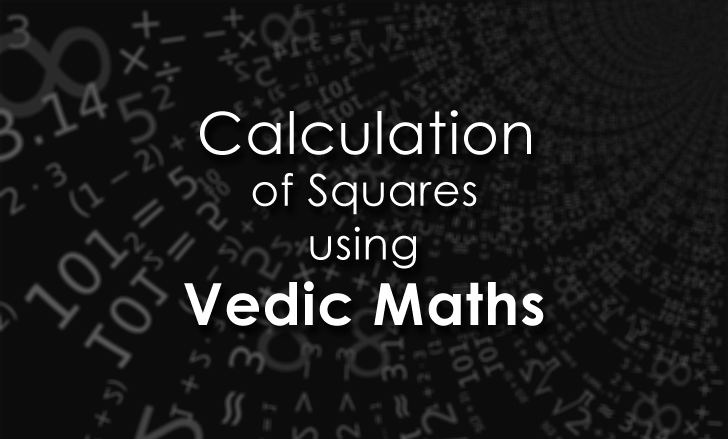Vedic Mathematics is an ancient collection of techniques and methods that greatly help to perform the mathematical calculation in a quick and easy manner. Vedic mathematics constitutes several techniques which are way faster than the techniques performed in regular mathematics as they are less complex and less time-consuming.
Amongst the several available techniques of Vedic mathematics, the shortcut for calculation of squares of numbers, also prove to be quite helpful and make the tedious process of calculation quite easy. There are various shortcut techniques available in Vedic Mathematics for the calculation of squares, two of which have been enlisted below, to make the calculation of squares easier.
Yavadunam or the Specific Method :
This method focuses solely on the numbers that lie in the close proximity of the multiples of powers on tens. For instance, in case of 10, 12 lies near to it or 98 which lies closer to 100 which actually stands as 102.
The technique lies in the calculation of the difference between the base value and accordingly performing the operations.
a = base value of 10
b = actual number
When, b > a then,
b2 = b + (b-a)/(b-a)2
and when, b < a then,
b2 = b -(a-b)/(a-b)2
Eg: b = 14
Then, 142 = 14+(14-10)/(14-10)2
142 = 14+4/42
142 = 18/16 = 1 (8+1) 6 = 196
Note: When the power of 10 increases then the equivalent number of digits increase after the slash. Thus, in above case power of 10 was 1, so the remaining 1 was carried forward to the following number.
Eg: b = 95
Then, 952 = 95-(100-95)/(95-100)2
952 = 95-5/52
952 = 90/25 = 9025
Ekadhikena Purvena or the Specific Method :
This method is used for the calculation of squares of the numbers that possess the unit’s digit as 5. The trick lies in the fact that the base value of the square shall always be 52 or 25, and for the rest of the digits of the number Ekadhikena Purvena method is applied, where 1 is added to the following digits of the number and then multiplication of the previous value of the digit and the new value of the digits post the addition is performed and adjoined to the 25, thus, giving the square of the number.
Eg: 65
where 6 = a, 5 = b → ab
b2 = 52 = 25
a + 1 = 6 + 1 = 7
a * (a+1) = 6 * 7 = 42
Therefore, ab = 4225
Eg: 105
where 10 = a, 5 = b → ab
b2 = 52 = 25
a + 1 = 10 + 1 = 11
a * (a+1) = 10 * 11 = 110
Therefore, ab = 11025


